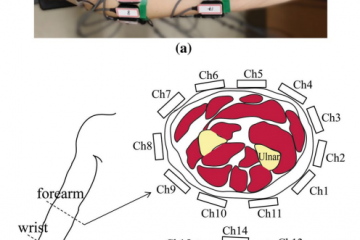This work suggests a supervised hierarchical Bayesian model for surface electromyography (sEMG)-based motion classification and its strategy analysis. The proposed model unifies the optimal feature extraction and classification through probabilistic inference and learning by identifying the Latent Neural States (LNSs) that govern a collection of sEMG signals. In addition, the inference step provides an approach to identify distinct muscle activation strategies according to sEMG patterns based on LNSs. To validate the model, nine-class classification using four sEMG sensors on the limb motions is tested. The model performance is evaluated with relatively high and low activation levels, generalized classification across subjects and online classification. The model, based on LNSs to capture various motions, is assessed with respect to activation levels, individual subjects and transition during online classification. Our approach cannot only classify sEMG patterns, but also provide the interpretation of sEMG strategic patterns. This work supports the potential of the proposed model for sEMG control-based applications.
Related publications
1. H Han, S Jo, J Kim, Comparative study of muscle stiffness sensor and electromyography and mechanomyography in fatigue conditions, Medical & Biological Engineering & Computing, 53(7), 577-588, 2015. [LINK][PDF]
2. H Han, S Jo, Supervised hierarchical Bayesian model-based electromyographic control and analysis, IEEE Journal of Biomedical and Health Informatics, 2013 [LINK][PDF]>
3. H Han, S Jo, J Kim, Comparative study of muscle stiffness sensor and electromyography and mechanomyography in fatigue conditions, Medical & Biological Engineering & Computing, 2015. [LINK][PDF]
4. H Han, S Jo, sEMG pattern classification using hierarchical Bayesian model, IEEE EMBS 2013. [PDF]

